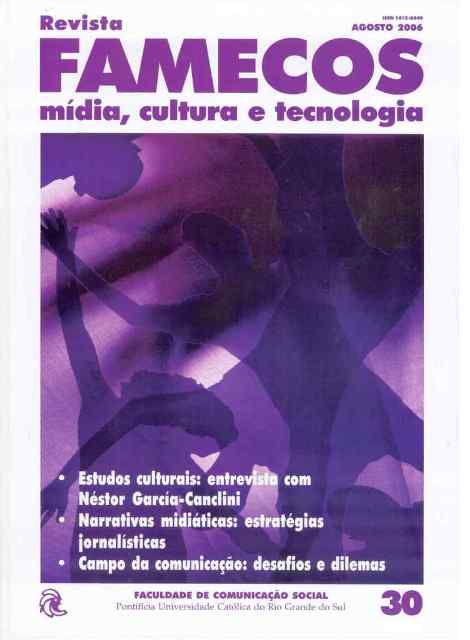From the royal city to the digital city: the flânerie as a spatial experience in the metropolis of the 19th century and in the cyberspace of the 21st century
DOI:
https://doi.org/10.15448/1980-3729.2006.30.3380Keywords:
Communication, cyberspace, flâneurAbstract
The intention of this article is to draw a parallel between the experience of nineteenth-century urban space represented by the flânerie and the new experience that diffuses in the beginning of the 21st century in cyberspace, trying to recognize in the latter a new condition of flânerie or the appearance of cyberflâneur.Downloads
References
BENJAMIN, Walter . Obras Escolhidas III – Charles Baudelaire: um lírico na época do capitalismo. São Paulo: Brasiliense, 1997.
______. Paris, Capital do século XIX . Espaço & Debates, São Paulo, n. 11, p. 05-13, 1984.
FEATHERSTONE, Mike. O flâneur, a cidade e a vida pública virtual. In: ARANTES, Antônio A. (org.). O espaço da diferença. Campinas, Papirus, 2000.
GIBSON, William. Neuromancer. São Paulo: Aleph, 2003.
JUCÁ, Diego. Virtual x Real: o ciberespaço e as transformações da vida cotidiana. [200?]. Disponível em: http://walmarjuca.sites.uol.com.br/. Acesso em: 21 jun. 2004.
LUNENFELD, Peter. Unfinished Business. In: LUNENFELD , Peter (ed.). The digital dialectic: new essays on new media. Massachusetts: MIT Press, 1999.
ZANCHETI, Sílvio. Cidade e ciberespaço público: será possível? In: Seminário internacional cidade digital e sociedade em rede, 2003, São Paulo. Anais... São Paulo: Cybercity, 2003.
Downloads
Published
How to Cite
Issue
Section
License
Copyright
The submission of originals to Revista Famecos implies the transfer by the authors of the right for publication. Authors retain copyright and grant the journal right of first publication. If the authors wish to include the same data into another publication, they must cite Revista Famecos as the site of original publication.
Creative Commons License
Except where otherwise specified, material published in this journal is licensed under a Creative Commons Attribution 4.0 International license, which allows unrestricted use, distribution and reproduction in any medium, provided the original publication is correctly cited.






